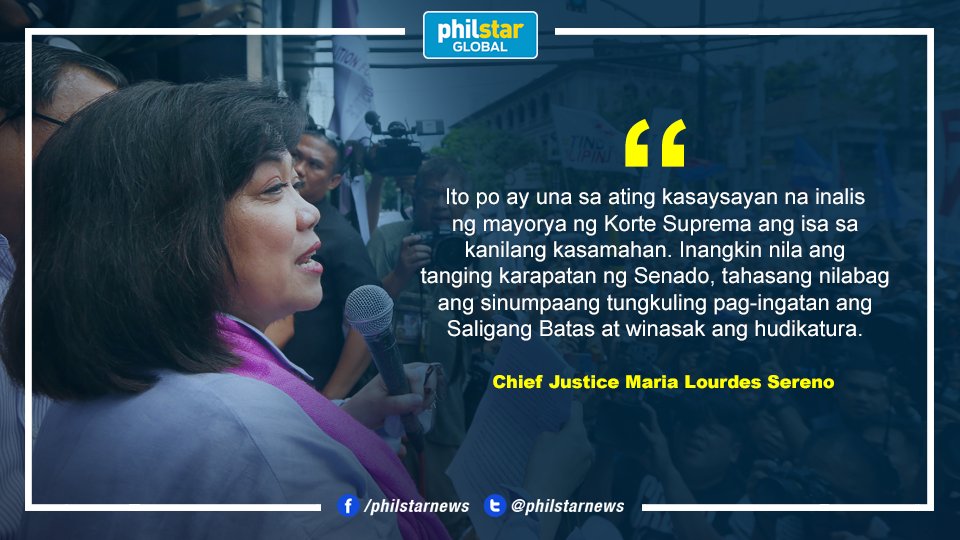Historic SC ruling on Sereno ouster may have constitutional consequences

MANILA, Philippines — Nine justices agreed with Solicitor General Jose Calida that the quo warranto petition is a proper remedy to oust Chief Justice Maria Lourdes Sereno.
“Maria Lourdes Sereno is found disqualified from, and hereby adjudged guilty of unlawfully holding and exercising, the office of the chief justice,” the SC ruled on Friday.
Sereno was ousted from the position in a vote of 8-6. The decision is immediately executory.
READ: How the quo warranto petition vs Sereno could affect the judiciary
Although a copy of the full decision has yet to be made available to the public, SC spokesperson Theodore Te said that the justices tackled issues pertinent to the decision.
Among the issues tackled by the justices was whether the quo warranto petition—that essentially challenges the legality of Sereno’s hold over her position—is the proper remedy. This was a matter raised by Sereno in her defense, and was also discussed in the oral arguments held last April 10.
READ: SC votes to oust Sereno
Quo warranto, under Rules of Court
A quo warranto petition is defined under Rule 66 of the Rules of Court. It can be filed against a “person who usurps, intrudes into, or unlawfully holds or exercises a public office, position or franchise.”
Solicitor General Jose Calida on March 5 accused Sereno of “unlawfully holding” the position as chief justice as she failed to “meet the integrity test” when she only filed three of her Statements of Assets, Liabilities and Net Worth in 2012.
The Rules of Court says that a quo warranto proceeding may be commenced within one year after the cause of ouster—an argument raised by Sereno in her defense and the Integrated Bar of the Philippines in its petition for intervention.
READ: Former SC justice: Time to file quo warranto vs Sereno lapsed in 2013
Calida, however, argued that the “limitation” does not apply to him. He said: “It has an imprescriptible right to bring a quo warranto petition under the maxim nullus tempus occurit regi which means, ‘no time runs against the king.’” He argued that the time limit does not apply to the state.

Impeachment case, under the Constitution
Sereno argued in her comment that the Constitution only allows an impeachment case as the proper legal remedy to oust a sitting chief justice. This argument was also echoed by multiple legal experts who argued that only the Senate, as impeachment court, can remove Sereno from office.
Article XI of the 1987 Constitution provides that: “The President, the Vice-President, the Members of the Supreme Court, the Members of the Constitutional Commissions, and the Ombudsman may be removed from office on impeachment.”
The provision of the Constitution states that an impeachable officer may be ousted upon the conviction of “culpable violation of the Constitution, treason, bribery, graft and corruption, other high crimes, or betrayal of public trust.”
The erstwhile chief justice was already facing an impeachment case before Congress.
Of the 14 justices, only five disagreed that the quo warranto was the proper remedy to remove Sereno from office. After the landmark decision on Friday, many, including Vice President Leni Robredo, remarked about the ruling's impact on the Constitution.

Related video:
- Latest
- Trending






























